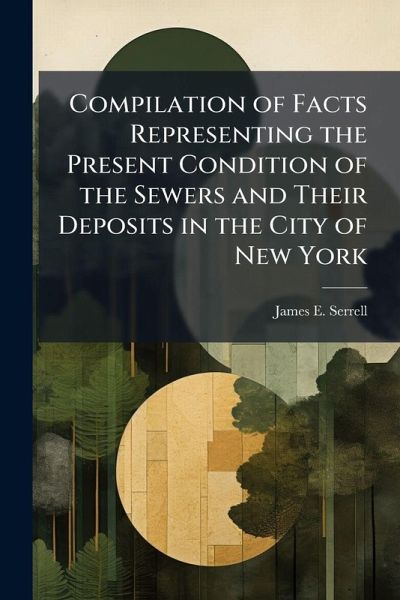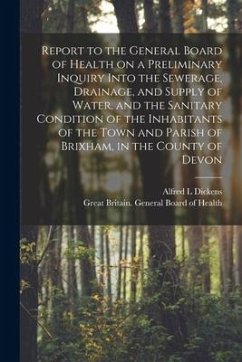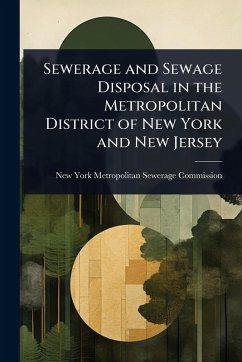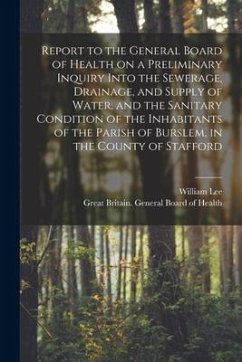
Compilation of Facts Representing the Present Condition of the Sewers and Their Deposits in the City of New York

PAYBACK Punkte
7 °P sammeln!
A detailed snapshot of New York City's sanitation infrastructure in the mid-19th century, "Compilation of Facts Representing the Present Condition of the Sewers and Their Deposits in the City of New York" offers a revealing look at the challenges of urban development. Authored by James E. Serrell, this compilation provides valuable insights into the engineering practices and environmental concerns of a rapidly growing metropolis. Explore the intricacies of the city's sewer system, the types of deposits found within, and the implications for public health and urban planning. This historical doc...
A detailed snapshot of New York City's sanitation infrastructure in the mid-19th century, "Compilation of Facts Representing the Present Condition of the Sewers and Their Deposits in the City of New York" offers a revealing look at the challenges of urban development. Authored by James E. Serrell, this compilation provides valuable insights into the engineering practices and environmental concerns of a rapidly growing metropolis. Explore the intricacies of the city's sewer system, the types of deposits found within, and the implications for public health and urban planning. This historical document serves as a primary source for researchers and enthusiasts interested in civil engineering, urban history, and the evolution of public works in American cities. Discover the past to understand the present; a fascinating glimpse into New York's efforts to manage its waste and protect its citizens in a time of significant transformation. This work has been selected by scholars as being culturally important, and is part of the knowledge base of civilization as we know it. This work was reproduced from the original artifact, and remains as true to the original work as possible. Therefore, you will see the original copyright references, library stamps (as most of these works have been housed in our most important libraries around the world), and other notations in the work. This work is in the public domain in the United States of America, and possibly other nations. Within the United States, you may freely copy and distribute this work, as no entity (individual or corporate) has a copyright on the body of the work. As a reproduction of a historical artifact, this work may contain missing or blurred pages, poor pictures, errant marks, etc. Scholars believe, and we concur, that this work is important enough to be preserved, reproduced, and made generally available to the public. We appreciate your support of the preservation process, and thank you for being an important part of keeping this knowledge alive and relevant.



![Reports on the Sanitary Condition of the City of Winnipeg, Manitoba [microform]: With Reference to Water Supply, Sewers, Sewer Ventilation, Sewer Gas Cover Reports on the Sanitary Condition of the City of Winnipeg, Manitoba [microform]: With Reference to Water Supply, Sewers, Sewer Ventilation, Sewer Gas](https://bilder.buecher.de/produkte/65/65575/65575306n.jpg)








